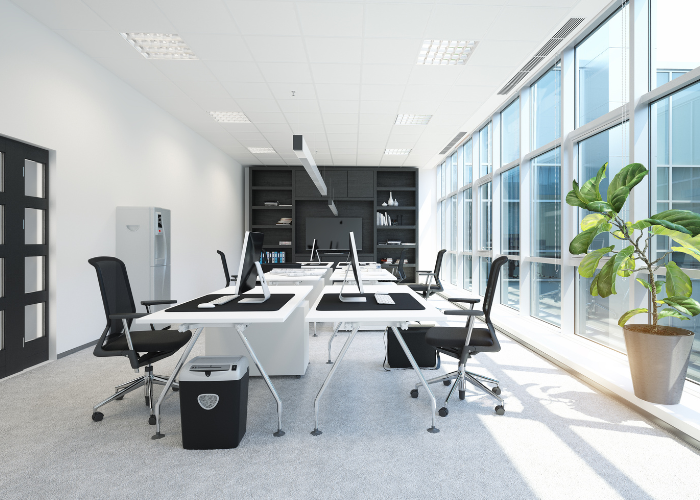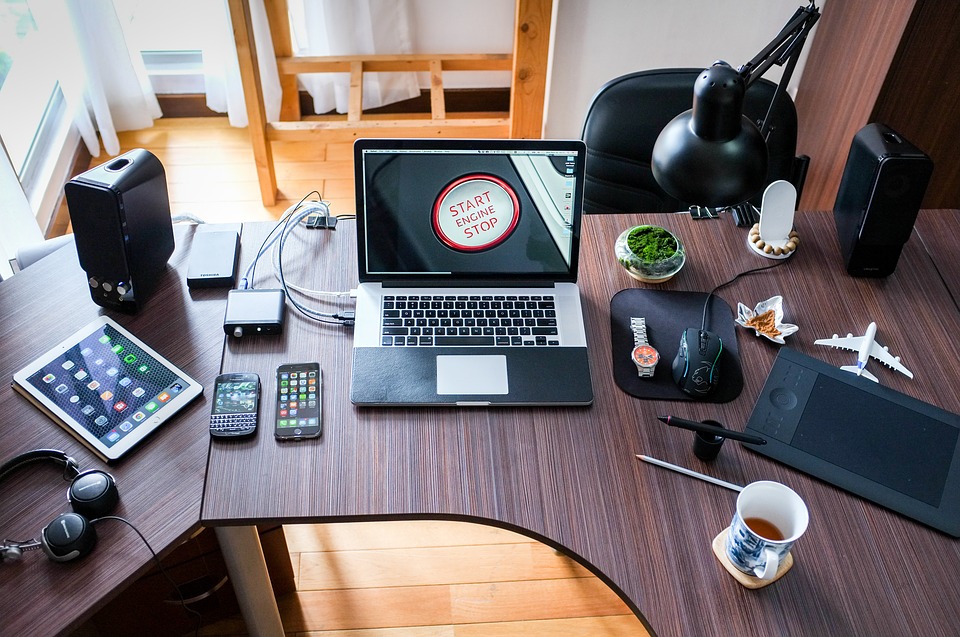Are you ready to turn your workspace into a hub of inspiration and productivity? Your environment plays a huge role in how creative and focused you feel. The good news: you don’t need a massive budget or a complete renovation to see big results. With a few thoughtful changes, you can create a space that sparks innovation, boosts your mood, and helps you do your best work every day.
These seven practical, research-backed ways transform any workspace into a creative powerhouse.
1. Embrace Flexible Layouts for Daily Variety
Changing your surroundings, even in small ways, can help you break out of creative ruts. A flexible workspace keeps things interesting and encourages you to approach problems from new angles.
- Move your desk or chair regularly: Shifting your setup every few weeks can spark new ideas. It keeps your mind fresh and open to different perspectives.
- Use lightweight furniture: Choose pieces you can easily rearrange to create different work zones. This makes it simple to adapt your space for focus, meetings, or brainstorming.
- Try different seating options: Alternate between a standard chair, a standing desk, or even a yoga ball for a change of perspective. Each seating choice can influence your energy and creativity.
- Designate creative corners: Set up a small area with a comfy chair or floor cushions for reading, thinking, or sketching. Having a dedicated spot for creative activities encourages new ways of thinking.
2. Let Natural Light and Fresh Air In
Exposure to daylight and fresh air is proven to improve creativity and productivity. Even if you have limited access to windows, small adjustments can make a big difference.
- Position your desk near a window: Natural light boosts your mood and helps you stay alert. It also reduces eye strain and makes your workspace feel more open.
- Use sheer curtains: These let in sunlight while minimizing glare. Your space will feel brighter and more inviting without being uncomfortable.
- Open windows when possible: Fresh air reduces stuffiness and keeps your mind clear. A gentle breeze can also help you feel more energized.
- Add a small fan or air purifier: If windows aren’t an option, these can help circulate the air. Clean air supports clear thinking and better health.
3. Bring Nature Indoors With Biophilic Touches
Biophilic design elements like plants and natural materials can reduce stress and boost creativity. Even if you don’t have a green thumb, there are easy ways to bring the outdoors in.
- Place a few plants on your desk or shelves: Greenery adds life and a sense of calm to any space. Plants can also improve air quality and brighten your mood.
- Choose high-quality faux plants: If you don’t have a green thumb, realistic artificial plants offer the same visual benefits without the maintenance. Experts like those at jamaligarden.com offer a wide range of lifelike faux plants, elegant planters, and stylish candles to beautify any space.
- Incorporate natural materials: Use wood, stone, or bamboo accents for a warm, organic feel. These textures can make your workspace more welcoming and comfortable.
- Try botanical prints or nature-inspired art: These can evoke the outdoors and add a peaceful vibe. Art inspired by nature can help you feel more relaxed and focused.
4. Use Color to Spark Your Imagination
Color can have a big impact on your mood and creativity. Don’t be afraid to experiment with different shades and combinations to see what works best for you.
- Add pops of blue for focus: Blue tones are known to help with concentration and clear thinking. Try blue accessories or artwork to encourage productivity.
- Try yellow accents for energy: Yellow is a cheerful color that can help stimulate creative ideas. Use it in small doses for a boost of optimism.
- Incorporate green for balance: Green is calming and helps reduce stress, making it great for busy workdays. Add green through plants, rugs, or wall art.
- Personalize with your favorite colors: Choose hues that make you feel happy and motivated. Personal touches can make your workspace feel uniquely yours.
5. Create Zones for Collaboration and Focus
Having separate areas for different types of work helps your brain switch gears and stay productive. It also encourages you to collaborate when needed and retreat for focus when it’s time to concentrate.
- Set up a brainstorming area: Use a whiteboard, corkboard, or large notepad for jotting down ideas and plans. A dedicated spot for brainstorming can spark new solutions.
- Designate a quiet spot: Reserve a part of your workspace for deep, focused work without distractions. This helps you concentrate when you need to get things done.
- Use dividers or rugs: These can help define different areas, even in small spaces. Visual boundaries make it easier to shift between tasks.
- Rotate your work location: Move between zones throughout the day to match your energy and task. Changing locations can refresh your mind and boost creativity.
6. Add Art and Personal Touches
Personalizing your workspace makes it feel like your own and can trigger creative thinking. Surround yourself with visuals that lift your spirits and keep you inspired.
- Hang inspiring artwork: Choose pieces that reflect your passions or remind you of your goals. Art can serve as a daily source of motivation.
- Create a vision board: Pin up photos, quotes, or sketches that motivate you. A vision board keeps your dreams and goals in sight.
- Display personal mementos: Items from your travels or achievements can remind you of your journey and spark new ideas. These objects add meaning to your workspace.
- Rotate your displays: Change out art or decorations regularly to keep your space feeling fresh. New visuals can spark new ideas and prevent boredom.
7. Prioritize Comfort and Ergonomics
Comfort is key to staying productive and creative. When your body feels good, your mind is free to focus on the work that matters.
- Invest in a supportive chair: Your back will thank you for good lumbar support during long work sessions. A comfortable chair can prevent aches and pains.
- Adjust your desk height: Make sure your workspace fits your body to avoid strain. The right desk height supports better posture and energy.
- Use a footrest or cushion: Small ergonomic tweaks can make a big difference in comfort. These additions help you maintain good posture.
- Take regular stretch breaks: Set a timer to remind yourself to move and reset your posture. Movement keeps your body and mind refreshed.
Final Thoughts
Transforming your workspace into a creative powerhouse doesn’t have to be complicated or expensive. By making intentional choices about layout, lighting, color, nature, and technology, you can design an environment that fuels your imagination and supports your best work. Start with one or two of these ideas and notice how your energy, focus, and creativity shift. Over time, you’ll create a space that not only looks great but also helps you achieve your biggest goals.


